Different Types of Snake Plants to Grow in a Home Environment
Familiar to the plant world or getting there, in both cases you must have heard about the snake plant. Known for its gripping looks and high tolerance, this plant is a show-stopper when kept indoors. Yes yes, this plant is your buddy if you are a frequent traveler or a person who doesn’t stay home much, as it can go for weeks without water and can survive so well even if the light conditions are poor. This long, yellow and green striped leafed plant is an evergreen perennial. The shape and the direction in which the leaves grow make it very distinctive and memorable.
This particular plant belongs to the genus Dracaena but doesn’t bow when you see it under the name Sansevieria. The misconception stems from the fact that it was recently reclassified as Dracaena. The snake plant is native to West Africa’s tropical regions, including Nigeria and Congo. Belonging to the tropical side, these plants like warm and humid climates to grow.
And when we say snake plant, we are talking about an amazing air purifier. Although not in hefty amounts, this plant can clean the toxic air in your house.
Did you know? They absorb cancer-causing pollutants including CO2, benzene, formaldehyde, xylene, and toluene.
You must be thinking that there must be a catch to this “oh so perfect” plant. Well yes, there is! This plant is mildly toxic. If taken in, they can upset the stomach or cause vomiting due to a chemical “Saponins” found in them. So if you are a pet owner or have small kids at home, we suggest putting it at a spot that is out of reach for them. Unfortunately, this plant has no medicinal uses.
Is it fancy falling asleep to the relaxing sound of running water? With this guide to buy an indoor fountain, you can create a peaceful ambiance at your home.
Growing Snake Plants at Home
As mentioned earlier, snake plants are very low-maintenance plants that don’t require much care. Overwatering can kill them. You can keep them in the shade and water them very little, still, they will be very happy.
They can propagate so well from leaf cutting. They just don’t like wet feet. Plant them in breathable soil that permits drainage. A general-purpose fertilizer will do great for the snake plants. Keep temperatures mild to warm as the plant cannot thrive in colder temperatures.
Tip: Snake plants are prone to root rot if overwatered and that becomes the cause of killing the plant.
10 Most Popular Types of Snake Plants
There are above 70 types of snake plants. We will be discussing here a few of them which are very popular for keeping at home. This discussion includes the types of snake plants with the tiniest detail that you need to know about them. This will help you in making the choice of which one to keep at your place.
1. Indian Bowstring Hemp
This is a perennial plant that belongs to the Asparagaceae family. Its scientific name is Sansevieria Zeylanica. It has heavy green foliage that is evergreen. But this type of snake plant requires full sun exposure. Indian bowstring hemp is stemless with erect and rigid leaves. It blooms in the morning sun when kept indoors but is very much drought tolerant. The leaves are beautifully marbled with shades of green and white. It has no traces of yellow color that makes it distinct from the rest. This is a scented plant belonging to the succulent category. We suggest extreme caution in handling this plant as the leaves are very spiky.
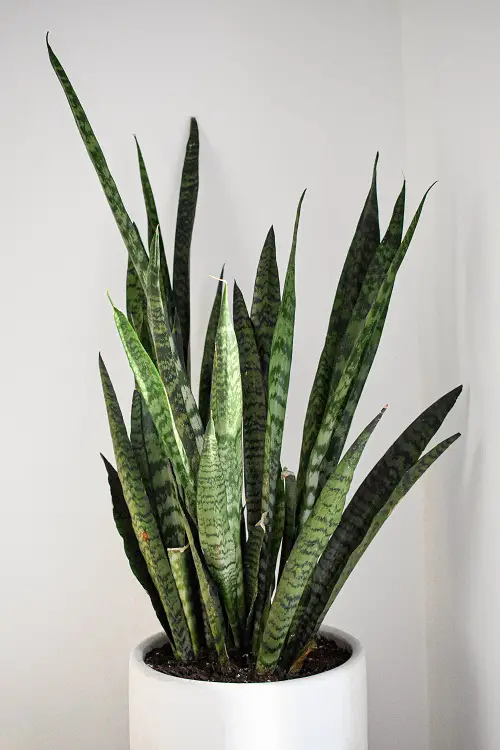
● Care Conditions:
Very easy to maintain and drought-friendly plant. It prefers medium to bright light. It can thrive in shady areas as well but that is not an ideal situation for it. This type doesn’t like the cold so prefer keeping it in a warm place.
● Bloom Time:
It is a very slow-growing plant that blooms best in mid to late summers
● Propagation Method:
It can propagate well by leaf-cutting method, seed sowing, or by dividing rhizomes.
● Plant Size:
The leaves of these plants can grow from 45-75cm long. It bears flowers that have a unique fragrance. This plant can reach up to the height of three feet.
Caution: Keep out of reach of children and pets.
2. Variegated Snake Plant
The scientific name for this category is Sansevieria Laurentii. It has blade-like leaves with yellow edging and a green marbled look. They are best known for their air-purifying quality. These are native to the tropical side of West Africa.
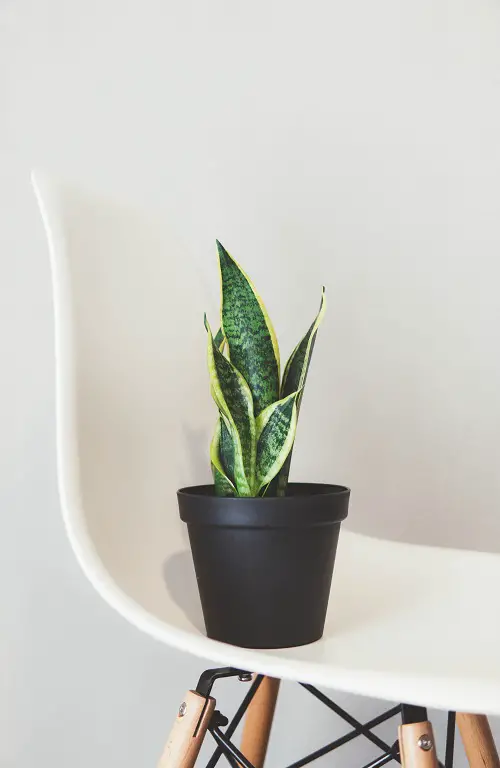
● Care Conditions:
Easy and low maintenance, this plant does not like overwatering. It requires bright to medium indirect light. It thrives best in warm and humid climatic conditions.
● Bloom Time:
Spring but rarely blooms.
● Propagation Method:
Instead of leaf-cutting and seeding, it can be propagated through division.
● Plant Size:
These are slow-growing plants that can reach up to the height of three feet and sometimes even taller.
3. Mother in Law’s Tongue
This is a mildly toxic but very popular plant that can be grown both indoors and outdoors. It’s a super hardy plant with tall and broad pointed leaves that are a unique color combination of silver-green. Although it is a rare sight, Mother-in-law’s tongue can bear flowers that look a lot like lilies when fully bloomed. It is very pleasantly fragrant. Its scientific name is Sansevieria ‘Moonshine’. Sometimes in low light, it can turn dark green but still retains its silvery touch. So you can imagine where it got its name from.
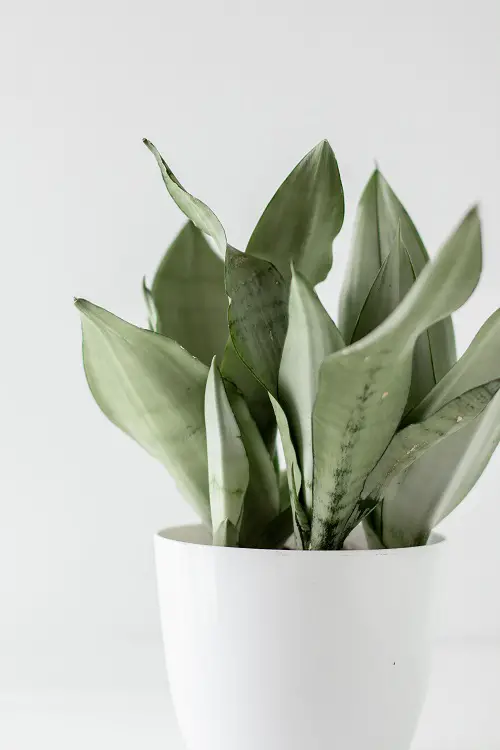
● Care Conditions:
They are easy to maintain and love humidity and warm temperatures. They like indirect but ample sunlight and less watering.
● Bloom Time:
It rarely blooms once a year which is usually around springtime with white fragrant flowers.
● Propagation Method:
It can be propagated through dividing rhizomes.
● Plant Size:
They can grow up to 2 feet tall if the growing conditions are perfect.
4. African Bowstring Hemp
Belonging to the Asparagaceae family, African bowstring hemp is native to South Africa. This is a very fast-growing evergreen perennial. An excellent quality fiber can be made from the leaves. This plant is good for indoors as well as outdoor settings. It attracts butterflies and birds so it helps in pollination. African bowstring hemp has stiff leaves that grow upright. When mature, these are dark green with a pattern made on them.
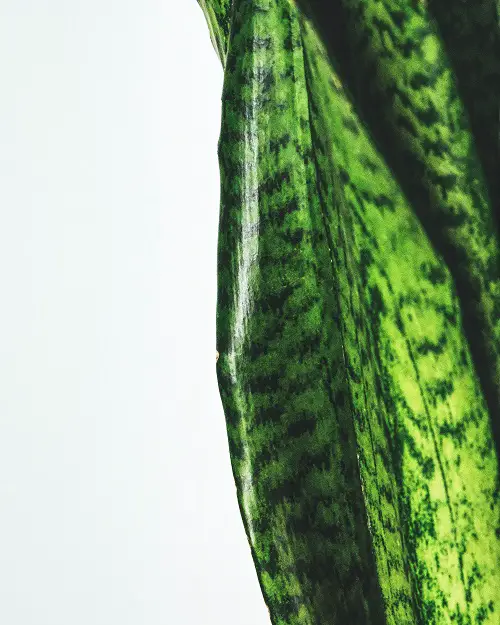
● Care Conditions:
Drought tolerant and loves semi-shade, so all in all, we can say that it is a low maintenance plant.
● Bloom Time:
It rarely blooms in spring with greenish-white fragrant flowers.
● Propagation Method:
It can propagate well by seed /division of the rootstock, leaf cuttings.
● Plant Size:
It can grow up to 6 feet high in optimal conditions.
5. African Spear Plant
Also known as the cylindrical snake plant or Sansevieria cylindrica, this plant is native to Angola. It is a very hardy, perennial, and evergreen plant and it will be with you for the longest time possible (as long as you don’t go overboard with the care). The leaves are spectacular looking that can grow up to 6 feet tall. The cylindrical leaves are approximately an inch thick to support the length of the plant. If you want more from this plant, get this braided by experts to give an edge to your interior design. The sharp spear edge of the plant is very sensitive. If accidentally broken, it can end growth for that leaf. This plant is mildly toxic and should be kept away from children and pets.
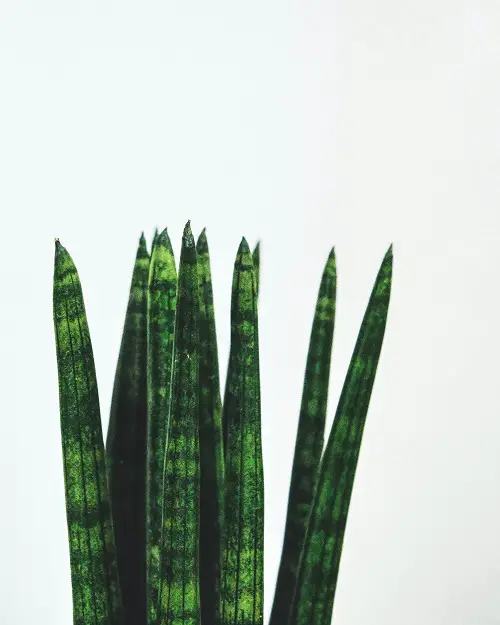
● Care Conditions:
Very easy to maintain, this plant likes minimal water and ample sunlight though not direct. It likes warm temperatures and humid conditions, prefers damp soil, and hates wet feet.
● Bloom Time:
This plant rarely blooms in spring
● Plant Size:
This plant can grow up to 6 feet tall.
● Propagation Method:
These can be propagated through leaf cuttings
Look into some useful container gardening ideas that would make it an absolutely fun activity.
6. Mikado
Mikado is another snake plant that gives an amazing aesthetic to your indoors. The upright leaves have an exceptional tiger print pattern on them and together they form a fan shape structure. This is a very compact, hybrid plant. This plant is native to Brazil that is kept indoors in very high humidity.
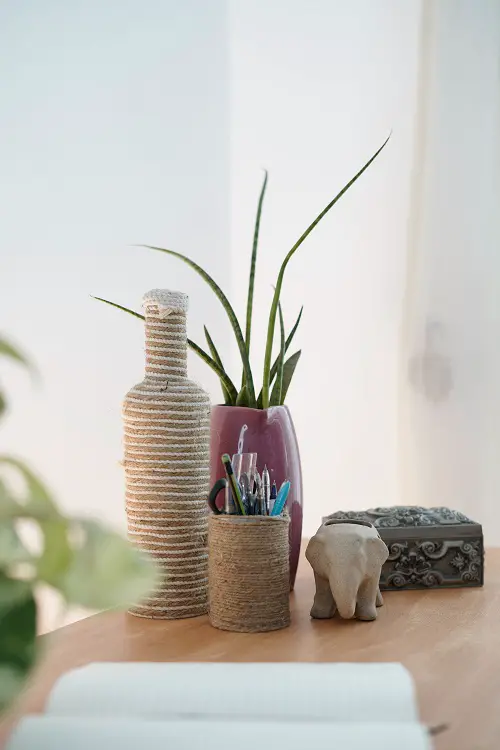
● Care Conditions:
This plant requires a high level of humidity, which is why it’s best to mist it every day. It also requires moist soil all the time. Watering thrice a week is recommended for this plant.
● Bloom Time:
It blooms a golden single flower on each stem around summertime for two to three months.
● Plant Size:
The plant height usually reaches 8 to 12 inches high.
● Propagation Method:
Propagate it via the leaf-cutting method in soil.
7. Kenya Hyacinth
Native to East Africa, Kenya’s hyacinth is a flowering snake plant. Usually, the plant grows clusters of six to twelve narrow and spiked leaves. Its scientific name is Sansevieria Parva.
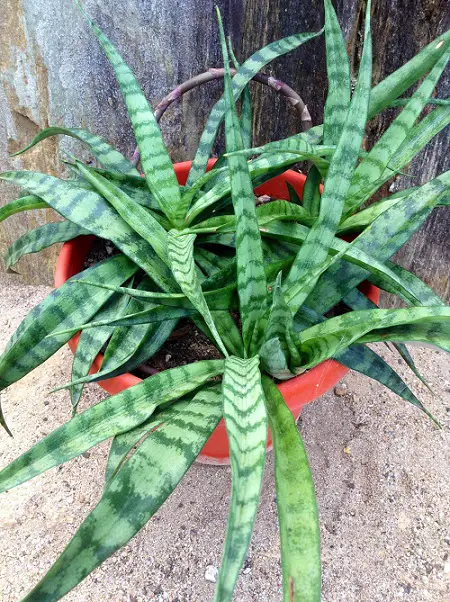
● Care Conditions:
These are drought-friendly plants that love warmer temperatures. It can easily survive in minimal sunlight. Dry and well-drained soil works best for them.
● Bloom Time:
Small, pinkish-white flowers that are pleasantly fragrant do not bloom consistently.
● Plant Size:
The size can vary between eight to sixteen inches.
● Propagation Method:
The best way to propagate these plants is by cutting method and then potting them.
8. Whale Fin Snake Plant
The whale fin snake plant is rare and a collector’s item for plant lovers. Due to the shape of the leaf, they have been named the “whale fin” snake plant. The dark green leaves have a unique pinkish margin. Another name for these tropical plants is Sansevieria Masoniana. An excellent air purifier, this plant is low maintenance like all other succulents.
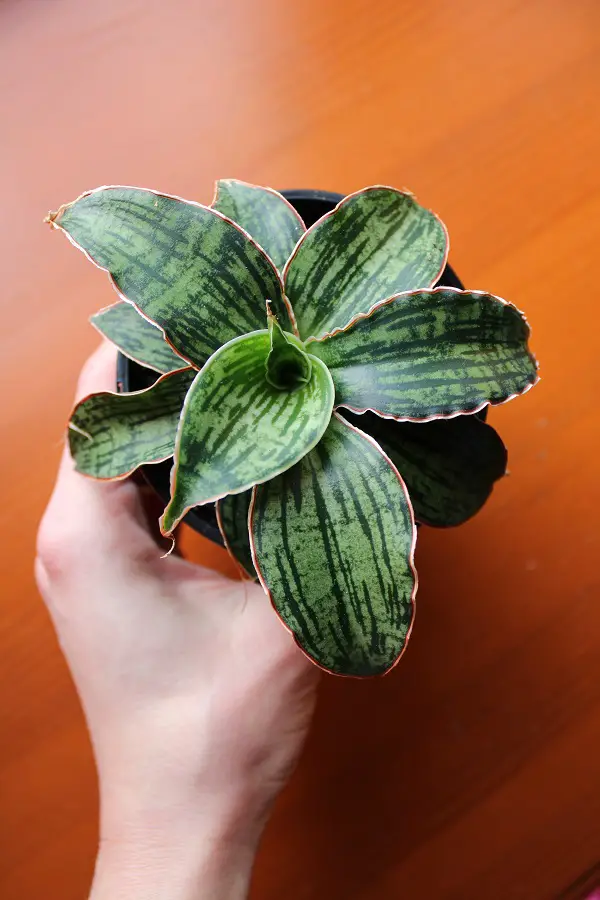
● Care Conditions:
This plant loves partial shade and prefers evenly moist to dry soil to grow well. Protection from the hot sun is required but is drought friendly. It likes warm temperatures like all snake plants.
● Bloom Time:
It rarely blooms in springtime.
● Plant Size:
A mature plant will rise to 3 feet tall and 2 feet wide
● Propagation Method:
Propagation is carried out via the division method.
9. Whitney Snake Plant
This succulent is native to Madagascar and is ideal for keeping as a houseplant. Whitney snake plant is small in size with colorful foliage that is all about spear-shaped leaves. If you have one at home, it is your mini air purifier. It can survive in low light but can become luscious green with more exposure to light. The scientific name for this plant is Sansevieria Trifasciata Whitney.
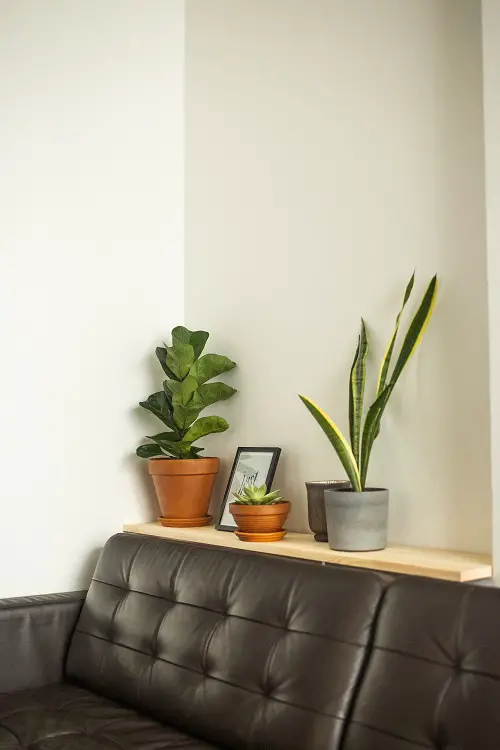
● Care Conditions:
Whitney snake plant is very low-maintenance and can survive in minimal light and less water. Overwatering can lead to root rot. These plants need warm temperatures to thrive and dry to moist soil.
● Bloom Time:
It rarely blooms with a non-fixed pattern.
● Plant Size:
The mature plant can reach up to the height of 8 to 12 inches
● Propagation Method:
Whitney snake plant can be easily propagated through the leaf-cutting method.
10. Twisted Sister
A snake plant similar to Variegated snake plant, but with mesmerizing twisted leaves. It’s a very popular indoor plant. The scientific name for this plant is Sansevieria Trifasciata.
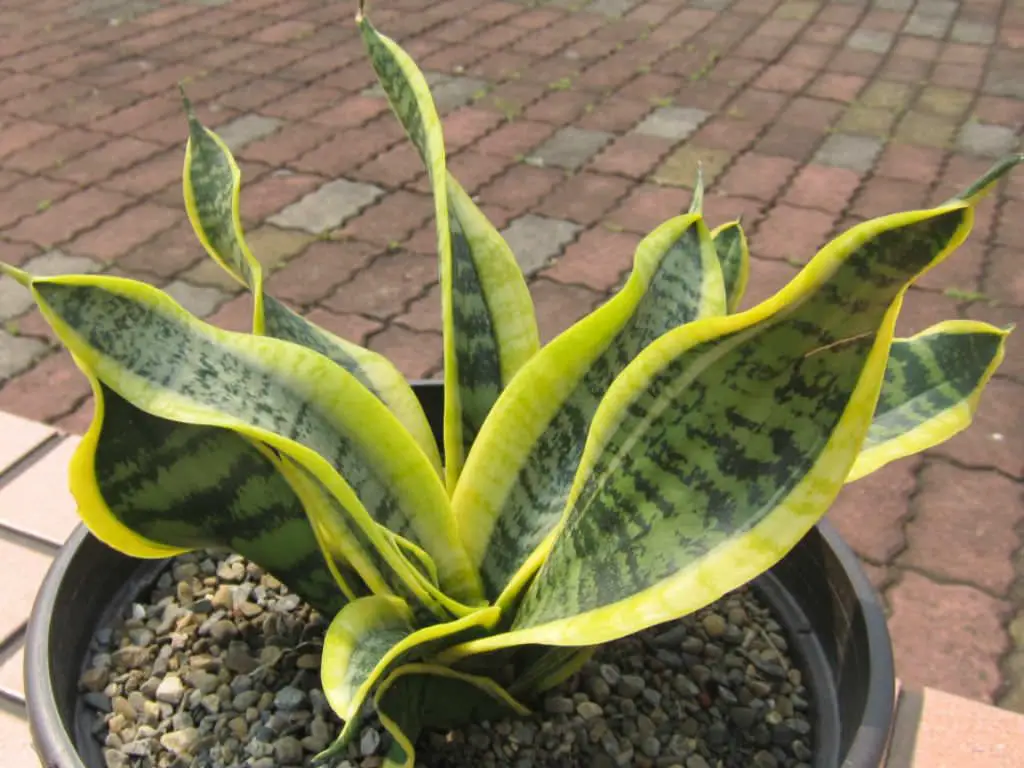
● Care Conditions:
Evenly moist soil is a must for this plant. So make sure that you water it regularly. It definitely does not like temperatures below 55 degrees. It needs to be fertilized every month during the growing season. This plant prefers bright light but can do well even in low light.
● Bloom Time:
Blooms rarely and that too in springtime.
● Plant Size:
It’s a dwarf plant that grows up to 14 inches tall.
● Propagation Method:
This plant can be propagated via the division and leaf-cutting method.
Now that you’ve decided which plants to keep at home, but if you’re not sure where to put them. Here’s my guide on how to pick a planter for your plant which will make the decision process easier for you.
The above-mentioned types of snake plants make the best house plants as they take very little care to grow. They are a statement piece to your indoor plant collection and they also act as efficient air purifiers.


